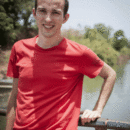Over a thousand people died when Hurricane Matthew hit Haiti on October 4.
More than 750,000 people are in urgent need of food, clean drinking water and safe shelter. In some of the worst hit areas, up to 90% of homes have been destroyed, and widespread flooding has left thousands of people in poor quality emergency shelters.
Stagnant water from the flooding has contaminated drinking water, and concerns are still being raised about the increasing threat of a cholera outbreak. Unless urgent action is taken the disease would spread quickly, spelling disaster for already vulnerable communities in one of the world’s poorest countries.
Our local Haitian staff are working with people from some of the worst affected areas, distributing kits containing soap, chlorine tablets and hygiene kits. Experience tells us that women and girls are often vulnerable to sexual violence in the chaos that follows an emergency of this scale, so we’re also setting up eight safe spaces for women, where they can get essential supplies and hygiene kits.
But as the bodies are buried and the flood waters withdraw, Haiti is facing a huge rebuilding operation, not dissimilar to the 2010 earthquake. In Grand’Anse – one of the worst hit areas – more than 90% of crops have been lost, along with most of the livestock. And while international support is again slowly arriving in Haiti, it’s vital that the same mistakes aren’t repeated, when billions of dollars of aid were squandered.
The 2010 rebuild operation was called “Build Back Better”, but the reality was very different for many Haitians. They saw their opinions and rights ignored, as people from around the world rushed in to tell them how they should rebuild their country.
An example of this was the Caracol Industrial Park in northern Haiti. More than $170 million of US government emergency aid money went towards financing the park in an area of Haiti unaffected by the earthquake. Representatives from the Haitian government arrived at the park site with trucks and bulldozers in January 2011, giving the local farmers who owned, rented and farmed the land a matter of hours before their homes and crops were destroyed.
In total, more than 1,000 people lost their land and livelihoods when construction of the U.S.-backed Caracol Industrial Park began. They were not consulted about the project before it started, and nearly 6 years later, they are still fighting to receive proper compensation for their losses.
But the story doesn’t end there. Projections for the State Department and the Inter-American Development Bank stated that the park would provide 65,000 jobs. Today, fewer than 10,000 people are employed in low-paying jobs – jobs that are by no means suitable for the farmers forced off the land.
Governments, philanthropists, companies and individual donors at all levels have a lot of different organizations to choose from when deciding where to send money to support Haiti. As they look at how they can support the Hurricane Matthew rebuild, it’s vital that the same mistakes are not repeated. The recovery must be Haitian-led, with communities properly consulted before projects proceed.
To make sure their money goes to an organization that can reach those people in greatest need, they should be asking questions like, Is the organization connected to local people? Do their staff speak Creole rather than French? And do they have the right relationships in place to be able to do the work?
Some donors are embracing this new approach of putting local people first, and they’re starting to see the results. Local people understand their context better than we ever can, and they’re determined and committed, and motivated to change the world around them. That’s why organizations like ActionAid are investing in local problem solvers – powerful people who live in communities like those hardest hit in Haiti by Hurricane Matthew, who are mobilizing others to use the resources we supply, and will continue to do so.
By actively investing in local people and the solutions they develop, we can bring about long-term and sustainable change in Haiti, making sure that communities are better prepared to face such disasters in the future.



